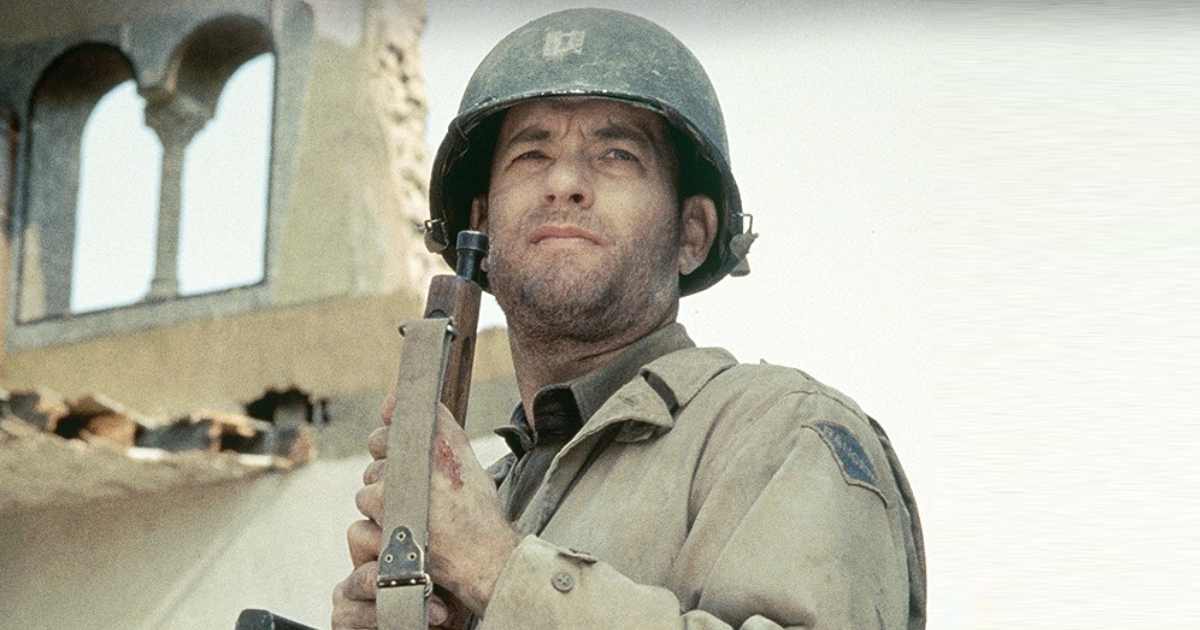Saving Private Ryan, a cinematic masterpiece, not only captivated audiences with its raw depiction of World War II but also showcased the remarkable collaboration between Steven Spielberg and Tom Hanks. Their partnership, built on mutual trust and creative freedom, allowed for moments of improvisation and bold decision-making that ultimately shaped the film’s narrative and impact.
This article delves into the behind-the-scenes moments where Hanks, embodying the character of Captain John Miller, subtly but firmly influenced key aspects of the film. From refusing a dramatic monologue to standing his ground during a pivotal combat scene discussion, Hanks’ choices, supported by Spielberg’s flexible filmmaking approach, added layers of authenticity and depth to the story.
Explore how these decisions, born from a deep understanding of the character and story, cemented Saving Private Ryan’s legacy as a powerful and honest portrayal of war, where even the smallest act of rebellion could leave a lasting mark.
Steven Spielberg’s Flexible Filmmaking Style
Spielberg fostered an environment on the set of Saving Private Ryan that encouraged improvisation and valued input from his actors. His openness to disagreement and his willingness to deviate from locked-down scripts allowed Hanks, who was more than just an actor, to contribute meaningfully to the film’s creative process. This collaborative spirit was pivotal in shaping the nuances of Captain John Miller’s character.
Spielberg’s approach ensured that the film felt authentic and grounded, despite its massive scale and complex subject matter. This flexibility was not a sign of indecision but rather a testament to Spielberg’s trust in his collaborators and his commitment to capturing the most genuine portrayal of the story.
Tom Hanks Refused A Monologue
One of the most significant instances of Hanks’ influence was his refusal to deliver a dramatic monologue that had been specifically written to showcase his character’s emotional depth. Hanks felt that such a moment would have compromised the integrity of Captain John Miller, who, up until that point, had maintained a stoic and dutiful demeanor.
“It was a monologue any actor would kill to have, because my character finally got to drop this whole mantle,” he told . “But I didn’t want to drop the mantle.” This decision, though unconventional, demonstrated Hanks’ commitment to portraying a character who remained composed and focused, even in the face of unimaginable horrors.
Hanks understood that a sudden emotional outpouring would have felt forced and inauthentic, ultimately detracting from the film’s overall impact. His choice to maintain Miller’s reserve highlighted the character’s internal struggles and the immense pressure he bore as a leader.
Hanks & Spielberg Clashed Over A Key Combat Scene
Hanks and Spielberg also found themselves at odds regarding a combat scene where Captain John Miller was depicted using an assault rifle. Spielberg was concerned about how audiences would react to seeing Hanks, known for his affable persona, engaging in such violent acts. However, Hanks stood his ground, arguing that it was essential to portray the realities of war and the toll it took on those who fought in it.
Hanks knew who Miller was and what the war asked of him. None of this came from ego. For Hanks, it came from a place of protecting the character. He was not interested in flashy lines or dramatic reveals if it meant undercutting what the story had been carefully building.
Ultimately, Spielberg conceded, recognizing the importance of authenticity in portraying the character’s experience. This moment exemplified the collaborative tension that existed on set, where both actor and director challenged each other to ensure the film remained true to its vision.
Protecting the Integrity of Captain Miller
Hanks’s commitment to his character extended beyond mere performance; he actively safeguarded Captain John Miller’s emotional and psychological consistency. He understood that Miller’s strength lay in his restraint and his ability to maintain composure in the face of chaos.
By resisting moments of overt emotional display, Hanks ensured that Miller remained a relatable and believable figure, a man burdened by responsibility but determined to carry out his duty. This nuanced portrayal resonated deeply with audiences, solidifying Hanks’s performance as one of the most memorable in war cinema.
A Testament to Collaboration
The on-set dynamic between Hanks and Spielberg, characterized by mutual respect and creative tension, ultimately contributed to the success of Saving Private Ryan. Their willingness to challenge each other and to prioritize the integrity of the story resulted in a film that was both powerful and authentic.
Hanks’s surprising on-set rebellion, far from being disruptive, served as a catalyst for deeper exploration of character and narrative, while Spielberg’s openness to these interventions allowed the film to evolve in unexpected and meaningful ways. Saving Private Ryan stands as a testament to the power of collaboration and the importance of trusting the creative instincts of those involved.
Conclusion: The Lasting Impact of Quiet Rebellion
Tom Hanks’s subtle yet significant influence on Saving Private Ryan highlights the importance of actor involvement in shaping a film’s narrative. His commitment to authenticity and his willingness to challenge established norms, supported by Steven Spielberg’s flexible filmmaking style, resulted in a powerful and enduring portrayal of war.
These behind-the-scenes decisions, born from a deep understanding of character and story, cemented Saving Private Ryan’s legacy as a landmark achievement in war cinema, where even the smallest act of rebellion could leave a lasting mark on both the film and its audience. The film continues to resonate with viewers, prompting reflection on the human cost of war and the enduring power of courage and resilience.

Leave a Reply